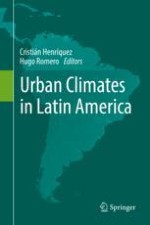2019 | OriginalPaper | Buchkapitel
4. Improving Urban Planning in a Middle Temperate Argentinian City: Combining Urban Climate Mapping with Local Climate Zones
verfasst von : Natasha Picone, Alicia M. Campo
Erschienen in: Urban Climates in Latin America
Aktivieren Sie unsere intelligente Suche, um passende Fachinhalte oder Patente zu finden.
Wählen Sie Textabschnitte aus um mit Künstlicher Intelligenz passenden Patente zu finden. powered by
Markieren Sie Textabschnitte, um KI-gestützt weitere passende Inhalte zu finden. powered by
